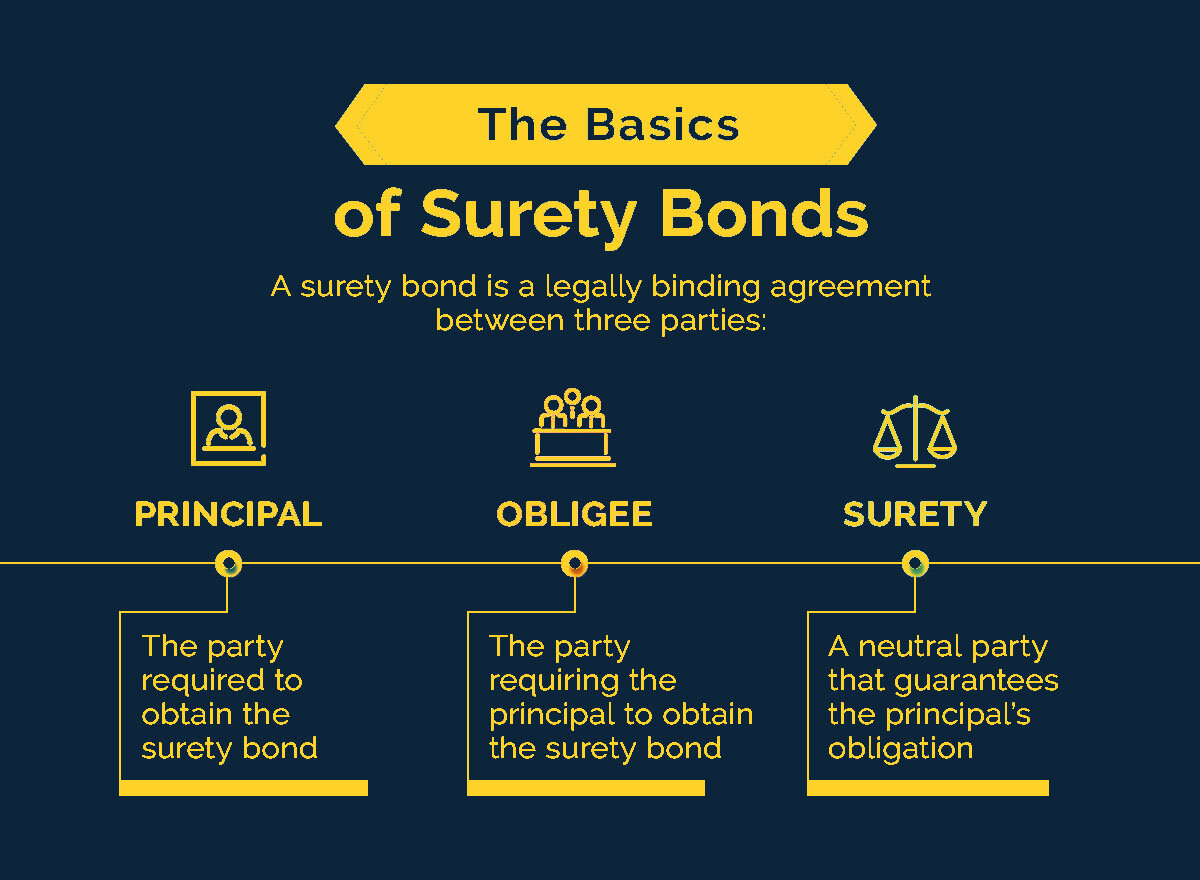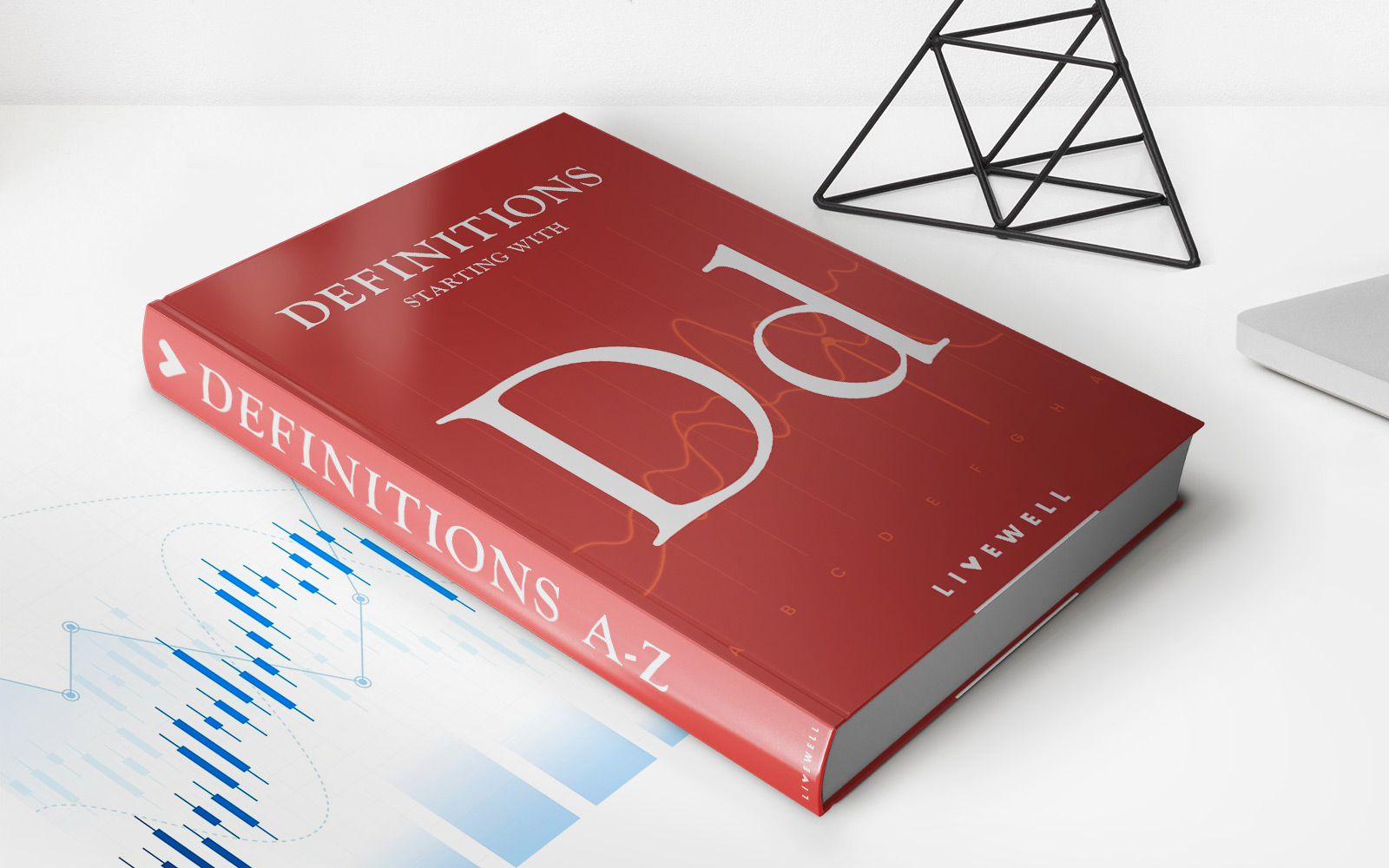Home>Finance>What Are The Most Relevant Considerations In Determining What A Firm’s Ideal Capital Structure Is?


Finance
What Are The Most Relevant Considerations In Determining What A Firm’s Ideal Capital Structure Is?
Modified: February 21, 2024
Discover the key factors to consider when determining a firm's ideal capital structure in the field of finance.
(Many of the links in this article redirect to a specific reviewed product. Your purchase of these products through affiliate links helps to generate commission for LiveWell, at no extra cost. Learn more)
Table of Contents
Introduction
A firm’s capital structure is a crucial aspect of its financial management. It refers to the way the company chooses to finance its operations through a combination of debt and equity. Determining the ideal capital structure is a complex decision that requires careful consideration of various factors.
In this article, we will explore the factors that play a crucial role in determining a firm’s optimal capital structure. By understanding and analyzing these considerations, companies can make informed decisions that align with their goals and maximize shareholder value.
Before delving into the factors, it is important to note that the ideal capital structure varies from company to company. It depends on factors such as industry dynamics, risk tolerance, profitability, and growth prospects. The primary goal is to strike a balance between minimizing the cost of capital and maximizing the value of the firm.
Now, let’s delve into the key considerations that companies must take into account when determining their ideal capital structure.
Definition of Capital Structure
Capital structure refers to the way a company finances its operations and investments by utilizing a combination of debt and equity. It is the composition of a firm’s liabilities, including long-term debt, short-term debt, preferred equity, and common equity. The capital structure determines the proportion of debt and equity funding used by a company to support its assets and operations.
Debt financing involves borrowing funds from external sources, such as banks or bondholders, which the company must repay with interest. Equity financing, on the other hand, involves selling shares of ownership in the company to investors in exchange for capital. This capital is not required to be repaid but may result in diluting existing shareholders’ ownership.
The capital structure decision is vital as it determines the company’s risk profile, cost of capital, and financial flexibility. By understanding the different elements of a firm’s capital structure, companies can strategically manage their financial resources and optimize their overall financial performance.
It is important to note that capital structure decisions are not static and can change over time. As a company grows and matures, its optimal capital structure may evolve based on market conditions, growth opportunities, profitability, and other internal and external factors.
Next, we will delve into the factors that influence a firm’s capital structure decisions and the relevant considerations when determining the ideal mix of debt and equity.
Factors Influencing Capital Structure Decisions
When determining the ideal capital structure for a company, several factors come into play. These factors can vary depending on the specific characteristics of the business, industry dynamics, and management preferences. By understanding these factors, companies can make informed decisions that align with their goals and maximize shareholder value.
1. Risk and Return Considerations: The level of risk a company is willing to take and the desired rate of return influence its capital structure choices. Higher levels of debt indicate higher financial risk but may also result in higher returns if the business performs well.
2. Cost of Capital: The cost of capital is a critical factor when deciding on the optimal capital structure. A company needs to assess the cost of debt and the cost of equity and strike a balance to minimize the overall cost of capital.
3. Business and Industry Characteristics: The nature of the business and the industry it operates in play a significant role in capital structure decisions. Some industries have higher capital requirements, such as infrastructure and manufacturing, leading to a higher proportion of debt financing.
4. Financial Flexibility: Companies need financial flexibility to react to changing market conditions, invest in growth opportunities, and weather economic downturns. The more flexibility a company requires, the lower its debt levels might be in the capital structure.
5. Tax Implications: The tax implications of different funding sources also impact capital structure decisions. Debt interest payments are tax-deductible, which can provide a tax shield and lower the overall cost of capital.
6. Management Preferences: Management preferences, risk appetite, and their beliefs about the company’s future prospects can influence capital structure decisions. Some managers may prefer a conservative approach with less debt, while others may be more willing to take on leverage for growth opportunities.
7. Market Conditions: The availability and cost of debt and equity financing in the market influence a company’s capital structure choices. In certain market conditions, companies may find it easier or more cost-effective to raise capital through debt issuance or equity offerings.
Overall, capital structure decisions require a careful analysis of these factors to strike the right balance between risk, return, cost of capital, and financial flexibility. By considering these influences, companies can establish an optimal capital structure that supports their growth objectives and enhances shareholder value.
Risk and Return Considerations
When determining the capital structure of a firm, one of the most crucial considerations is the trade-off between risk and return. The level of risk a company is willing to bear and the desired rate of return greatly influence the financing decisions and the overall capital structure.
Risk: Risk refers to the uncertainty and potential for financial loss that a company faces. In the context of capital structure, it relates to the potential difficulty a firm may encounter in meeting its financial obligations. Higher levels of debt financing increase a company’s financial risk as it is obligated to make interest payments and principal repayments, which can strain cash flow in challenging times.
Return: Return, on the other hand, relates to the potential rewards that investors and shareholders expect to receive for bearing the risk. A higher capital structure can result in higher returns if the company is performing well, as more debt translates into magnified profits for shareholders.
By carefully balancing risk and return, companies attempt to optimize their cost of capital and maximize shareholder value. Here are a few considerations related to risk and return in capital structure decisions:
1. Risk Tolerance: Different businesses have varying risk tolerances based on their size, industry, profitability, and overall financial health. Conservative companies may prefer a lower leverage ratio to minimize financial risk, while more aggressive firms may be willing to take on higher levels of debt to achieve higher returns.
2. Business Stability: The stability of a company’s cash flows and the predictability of its earnings are crucial factors in determining the appropriate capital structure. Industries with stable and consistent cash flows may have a greater ability to service higher levels of debt, while those with volatile or cyclical earnings may opt for a more conservative capital structure.
3. Financial Health: The financial health of a company is also a significant factor in assessing risk. A strong balance sheet with ample liquidity and cash reserves provides a greater cushion to withstand economic downturns or unexpected challenges. This allows companies to take on higher levels of debt without compromising their ability to meet their financial obligations.
4. Growth Opportunities: A company’s growth prospects may also impact its risk-return profile. Companies with significant growth opportunities may be more willing to accept higher levels of debt to fund expansion and capitalize on potential returns. Conversely, mature companies with limited growth prospects may prefer a more conservative capital structure to safeguard against risk.
5. Investor Perception: Investor perception of risk and return can also influence a company’s capital structure. Higher levels of debt may be seen as a sign of financial risk, leading to a higher cost of equity and potential difficulties in attracting investors. Conversely, a conservative capital structure may be more appealing to risk-averse investors.
Overall, companies must carefully evaluate their risk appetite and desired rate of return when making capital structure decisions. By striking the right balance, companies can optimize their capital structure to meet their financial objectives while effectively managing risk.
Cost of Capital
In capital structure decisions, understanding the cost of capital is crucial. The cost of capital is the rate of return that a company must earn on its investments to satisfy its investors and lenders. It represents the overall cost of financing the firm’s operations through a combination of debt and equity.
The cost of capital comprises two primary components: the cost of debt and the cost of equity.
Cost of Debt: The cost of debt is the interest rate that a company must pay on its borrowed funds. It is based on market interest rates, creditworthiness, and other terms and conditions attached to the debt. The interest payments made by the company are tax-deductible, which can provide a tax shield, lowering the overall cost of debt.
Cost of Equity: The cost of equity reflects the return required by equity investors to compensate for the risk they undertake by investing in the company. It is influenced by factors such as the company’s perceived risk, its growth prospects, dividends, and the overall market conditions. Unlike debt, the cost of equity is not tax-deductible.
The capital structure decisions made by a company affect its weighted average cost of capital (WACC). WACC is the average rate of return required by all of the company’s investors, including equity shareholders and debt holders. It represents the minimum rate of return that a company must generate to satisfy its investors and creditors.
A well-optimized capital structure aims to minimize the WACC. This is achieved by balancing the relative proportions of debt and equity financing to obtain the lowest possible cost of capital for the company.
When deciding on the optimal capital structure, companies must consider the following factors related to the cost of capital:
1. Assessing the overall risk profile: Companies with higher perceived risk may face higher borrowing costs due to higher interest rates demanded by lenders. Understanding the risk associated with the business and industry is crucial to determining the cost of capital.
2. Evaluating the trade-off between debt and equity: Debt financing generally has a lower cost compared to equity financing due to the tax shield it provides. Companies need to assess the optimal mix of debt and equity to minimize the overall cost of capital.
3. Analyzing market conditions: The cost of capital is influenced by the prevailing market conditions, such as interest rates, investor sentiment, and economic factors. Companies should analyze these factors to understand the cost of raising capital in the market.
4. Considering the impact on shareholder value: Ultimately, the cost of capital affects the returns earned by investors and the potential value of the company. By optimizing the capital structure and minimizing the cost of capital, companies can enhance shareholder value and attract investors.
5. Balancing short-term and long-term financing: Companies must strike a balance between short-term and long-term financing. While short-term debt may have a lower cost, it also carries the risk of refinancing and interest rate fluctuations. Long-term debt may provide stability but comes with higher interest rates.
By carefully analyzing and considering the cost of capital, companies can make informed decisions about their capital structure. The well-balanced capital structure will help companies achieve their financial objectives, maximize shareholder value, and support sustainable growth.
Business and Industry Characteristics
When determining the optimal capital structure, it is essential to consider the specific characteristics of the business and the industry in which it operates. Different industries have varying capital requirements, risk profiles, and overall financial dynamics, which influence the financing decisions of companies.
1. Capital Intensity: Some industries, such as manufacturing or infrastructure, require significant capital investments in machinery, equipment, and infrastructure. These capital-intensive industries may have a higher proportion of debt financing in their capital structure to fund these large-scale investments.
2. Business Life Cycle: The stage of the business life cycle is another important factor. In the early stages of a startup or a high-growth company, equity financing may be more prevalent to finance expansion and fuel innovation. As the company matures, it may transition to a more balanced mix of debt and equity financing.
3. Profitability and Cash Flow Stability: The stability and predictability of a company’s profitability and cash flows influence its capital structure decisions. Companies with stable and consistent cash flows may be better positioned to take on higher levels of debt, while those with volatile or seasonal earnings may opt for a more conservative capital structure.
4. Growth Opportunities: The growth prospects of the business also play a significant role. Companies with ample growth opportunities may choose to have a higher proportion of equity financing to retain flexibility and capitalize on potential expansion. Conversely, companies with limited growth prospects may prefer a more conservative capital structure.
5. Regulatory Environment: The regulatory environment and government policies specific to the industry can also influence capital structure decisions. Regulatory restrictions or incentives may impact the use of debt or equity financing. Certain industries, such as utilities or financial services, may have specific regulatory capital requirements.
6. Competitive Landscape: The competitive dynamics within the industry can impact capital structure decisions. In industries with intense competition, companies may choose a more flexible capital structure to quickly respond to market changes and invest in strategic initiatives to gain a competitive edge.
7. Industry Risk Profile: Industries vary in terms of their risk profile. Some industries, such as technology or biotechnology, are inherently riskier due to rapid technological advancements and uncertainties. Companies operating in high-risk industries may opt for a more conservative capital structure to mitigate risks and ensure financial stability.
By understanding the unique characteristics of the business and the industry, companies can align their capital structure choices with the specific needs and risk profiles of their respective sectors. This ensures that the capital structure supports their strategic goals, facilitates growth, and enhances overall financial stability.
Financial Flexibility
Financial flexibility refers to a company’s ability to respond and adapt to changing business and market conditions. It involves having access to sufficient financial resources and maintaining a capital structure that allows for agility in decision-making and capital allocation.
An optimal capital structure provides sufficient financial flexibility for companies to:
1. Seize Growth Opportunities: Companies with financial flexibility can capitalize on growth opportunities as they arise. They can swiftly invest in research and development, acquisitions, new projects, or expansion plans without being constrained by limited capital resources. This ability to pursue growth initiatives can be a significant competitive advantage.
2. Navigate Economic Downturns: Economic downturns or industry downturns are inevitable. Financially flexible companies are better equipped to weather such challenging times. They have the flexibility to reduce expenses, manage working capital, and access additional funding if needed. This resilience helps them survive downturns and emerge stronger compared to their competitors.
3. Adjust to Industry Changes: Industries are subject to constant change, driven by technological advancements, shifts in consumer preferences, or regulatory reforms. Financially flexible companies can adapt to such changes by reallocating capital, investing in new technologies, or diversifying their products and services. This adaptability ensures their long-term competitiveness and viability in the market.
4. Maintain Optimal Liquidity: Financial flexibility allows companies to maintain optimal liquidity levels. Liquidity is crucial for meeting short-term obligations, managing unforeseen expenses, or taking advantage of unexpected opportunities. Companies with ample financial flexibility can ensure they have sufficient cash reserves or access to credit lines to address liquidity needs promptly.
5. Manage Debt Obligations: Financial flexibility provides companies the ability to manage their debt obligations effectively. They can meet interest payments and principal repayments without straining their cash flow or risking default. This enhances their creditworthiness, improves their access to debt financing, and allows for more favorable borrowing terms.
6. Enhance Investor Confidence: Financial flexibility instills confidence in investors and stakeholders. Companies with a strong financial position and adequate flexibility inspire trust and attract investments. They demonstrate their ability to navigate challenges and deliver sustainable long-term value, enhancing their reputation among shareholders, lenders, and the broader market.
Financial flexibility is directly influenced by a company’s capital structure. By maintaining an appropriate mix of debt and equity, companies can strike a balance between risk and flexibility. Too much debt can limit flexibility and increase financial risk, while an excess of equity may indicate underutilization of financial resources.
Overall, companies must carefully consider financial flexibility when determining their capital structure. By ensuring adequate flexibility, companies can position themselves for growth, respond effectively to market changes, and enhance their overall financial resilience.
Tax Implications
When making capital structure decisions, companies must consider the tax implications associated with different sources of financing. The tax treatment of debt and equity financing can significantly impact a company’s overall cost of capital and its attractiveness to investors and lenders.
1. Tax Shield: One of the key benefits of debt financing is the tax shield it provides. Interest payments made on debt are typically tax-deductible expenses, reducing a company’s taxable income. This tax advantage helps lower the cost of debt and improves a company’s after-tax cash flows.
2. Marginal Tax Rate: The extent to which the tax shield benefits a company depends on its marginal tax rate. Companies with higher marginal tax rates can realize greater tax advantages from debt financing. Conversely, companies with lower tax rates may find the tax benefits of debt financing relatively less significant.
3. Equity Financing: Unlike debt, equity financing does not offer direct tax benefits. Dividends paid to shareholders are not tax-deductible for the company. While equity financing is not associated with tax shields, it can appeal to investors who seek tax-free returns through capital gains or dividend tax credits in certain jurisdictions.
4. Debt-Equity Ratio: The debt-to-equity ratio in a company’s capital structure has implications for its overall tax position. Excessive debt can lead to restrictions on interest expense deductions, such as interest barrier rules or thin capitalization rules imposed by tax authorities. It is important for companies to maintain a balanced debt-to-equity ratio to maximize the tax benefits from debt financing.
5. Financial Reporting: Tax implications can also affect financial reporting. Companies may need to account for deferred tax assets or liabilities related to differences between taxable income and financial reporting income. Changes in tax laws or regulations can have an impact on a company’s financial statements and effective tax rate.
6. International Tax Considerations: Multinational companies must also consider international tax implications when structuring their capital. Tax regulations, transfer pricing rules, and tax treaties can impact the tax efficiency of cross-border financing arrangements. Companies need to navigate complex international tax landscapes to optimize their capital structure from a global tax perspective.
It is important for companies to consult with tax experts to fully understand the specific tax implications of their capital structure decisions. Analyzing the tax benefits and costs associated with different financing options can help companies optimize their capital structure, minimize their overall tax burden, and enhance the company’s financial performance.
Management Preferences
Management preferences play a significant role in determining a company’s capital structure. The personal beliefs, risk appetite, and strategic vision of management can heavily influence the financing decisions made for the business.
1. Risk Tolerance: Management’s risk tolerance shapes the company’s approach to capital structure. Some managers may have a conservative mindset, preferring lower levels of debt to minimize financial risk. They prioritize stability and the ability to weather economic downturns. On the other hand, more aggressive managers may be comfortable taking on higher levels of debt to finance growth opportunities and potential higher returns.
2. Growth Objectives: Management’s growth objectives are another key factor. Some managers prioritize rapid expansion and market dominance, which may require more aggressive financing strategies. They may be more willing to take on higher levels of debt to fund acquisitions, invest in research and development, or expand into new markets. Other managers may take a more measured approach, ensuring that growth is sustainable and financed primarily through retained earnings or equity financing.
3. Cash Flow Priorities: Different companies have varying cash flow priorities, and management preferences dictate how excess cash is utilized. Some managers may prioritize debt reduction to strengthen the balance sheet and decrease interest expense, while others may prefer to allocate cash towards dividends for shareholders or reinvestment in the business. These choices can impact the overall capital structure and financing options pursued by the company.
4. Control and Ownership: Management preferences can also be influenced by the desire to maintain control and ownership of the company. Some managers may prefer to limit external equity financing to avoid dilution of their ownership stake. They may prioritize maintaining a controlling interest in the company, which can shape their decisions regarding capital structure and financing alternatives.
5. Industry Norms and Practices: Management preferences can also be influenced by industry norms and practices. Some industries have specific expectations regarding capital structure, leverage ratios, or financing approaches. Management may choose to adhere to these norms to maintain credibility and competitiveness within the industry.
6. Stakeholder Alignment: Management preferences may be influenced by the interests of various stakeholders, including shareholders, board members, and lenders. Aligning the capital structure with stakeholder interests can help build trust and confidence and enhance relationships with key stakeholders.
Management preferences need to be balanced with other key considerations, such as risk and return, cost of capital, and industry dynamics. It is essential for management to conduct a comprehensive analysis, consider different perspectives, and make informed decisions that optimize the capital structure and support the long-term goals of the company.
Market Conditions
Market conditions play a crucial role in shaping a company’s capital structure. The availability, cost, and timing of external financing options are influenced by the prevailing market conditions. Understanding and responding to these conditions are essential in making optimal capital structure decisions.
1. Interest Rates: Interest rates in the market impact the cost of debt financing. Fluctuations in interest rates can affect borrowing costs, making debt financing more or less attractive. When interest rates are low, companies may opt for more debt to take advantage of favorable borrowing conditions. Conversely, when interest rates are high, companies may shift toward equity financing or adjust their capital structure to minimize interest expense.
2. Investor Sentiment: Investor sentiment, influenced by economic conditions, market trends, and company-specific factors, affects the demand for equity and debt offerings. Favorable investor sentiment can lead to higher demand for shares or bonds, enabling companies to raise funds at a lower cost. Conversely, adverse investor sentiment may result in higher costs or limited availability of financing options.
3. Capital Markets: The condition of the capital markets can impact a company’s ability to access funding. A robust capital market, with active investors and ample liquidity, provides companies with a wider range of financing alternatives. In contrast, during periods of market volatility or tight credit conditions, companies may face challenges in raising funds or be limited to expensive financing options.
4. Industry-Specific Factors: Market conditions can vary by industry. Industry-specific factors such as cyclicality, regulatory changes, or technological advancements can influence the demand for capital and the availability of financing options. Companies need to consider these industry dynamics when determining their capital structure to ensure alignment with market conditions.
5. Competitive Landscape: The competitive environment in which a company operates can also shape its capital structure decisions. Market conditions may require companies to access capital quickly to invest in strategic initiatives, expand operations, or compete with rivals. Factoring in the competitive landscape is crucial in determining the appropriate capital structure to support growth and maintain a competitive edge.
6. Investor Preferences: Market conditions are influenced by investor preferences and the appetite for different types of investments. These preferences can vary over time, with investors seeking higher returns, safety, or sustainable investments. Companies must be aware of these changing preferences when designing their capital structure to attract and retain investors.
Market conditions are dynamic and can change rapidly. Companies must regularly assess the market landscape, monitor trends, and adapt their capital structure accordingly. This ensures the company’s ability to access funding at optimal terms and align its financing decisions with the prevailing market conditions.
Conclusion
Determining the optimal capital structure for a company is a critical decision that requires careful consideration of various factors. The capital structure directly impacts a company’s risk profile, cost of capital, financial flexibility, tax implications, and overall financial performance.
Throughout this article, we have explored the key considerations that influence capital structure decisions. Factors such as risk and return considerations, cost of capital, industry characteristics, financial flexibility, tax implications, management preferences, and market conditions all play a vital role in shaping a company’s capital structure.
By understanding and analyzing these factors, companies can make informed decisions that align with their specific business goals and enhance shareholder value. The ideal capital structure may vary for each company, as it depends on factors such as industry dynamics, risk tolerance, profitability, growth prospects, and management preferences.
Striking the right balance in the capital structure involves managing the trade-offs between risk and return, utilizing tax advantages, assessing industry norms, and adapting to market conditions. It may require maintaining a mix of debt and equity financing that optimizes the cost of capital while preserving financial flexibility.
To make sound capital structure decisions, companies should consult with financial advisors, tax experts, and legal professionals who are well-versed in the intricacies of capital markets and regulatory environments.
In conclusion, determining the ideal capital structure is a complex and dynamic process for any company. It requires careful evaluation of various factors and continuous monitoring of market conditions. With thorough analysis and strategic decision-making, companies can establish an optimal capital structure that supports their financial objectives, enhances their competitive position, and maximizes shareholder value in the long term.














